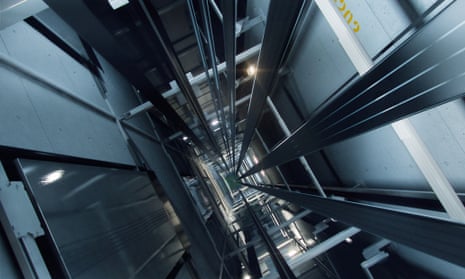Exploring the World of Lifts: Typical Issues Encountered by Different Lift Mechanisms
As we browse with the upright transportation systems of modern structures, elevators stand out as an indispensable part of our day-to-days live. Nonetheless, behind their seamless procedure lies a world of complex mechanisms that can occasionally experience difficulties. From hydraulic lifts to traction systems and machine-room-less styles, each lift type features its collection of common concerns. Understanding these obstacles is vital for making sure the smooth functioning of these vital systems. Allow's explore the intricacies that underlie the procedure of elevators and the prospective concerns that can arise, clarifying the intricate web of lift devices.
Hydraulic Lifts
Hydraulic elevators, usually chosen for low-rise structures, utilize fluid pressure to manage the activity of the lift vehicle (lift repair companies). This system entails a hydraulic pump pushing oil into a cyndrical tube, creating the lift to move in the preferred direction. While hydraulic lifts are known for their peaceful and smooth procedure, they do include their own collection of typical concerns
One common issue with hydraulic elevators is oil leakage. Additionally, problems with the control system, such as malfunctioning valves or a malfunctioning pump, can trigger interruptions in the lift's motion.
Normal upkeep and timely repair services are vital to ensure the smooth performance of hydraulic lifts. By attending to these typical issues proactively, building owners can minimize downtime and guarantee the security and efficiency of their vertical transportation system.
Traction Elevators
When considering upright transportation systems in structures, one more common type besides hydraulic lifts is the traction lift. Traction lifts operate using a system of ropes and weights that move the lift cars and truck by grasping onto the hoist ropes. This mechanism enables smoother and much faster upright transport compared to hydraulic systems.
Among the common concerns dealt with by traction lifts is rope wear. The constant motion of the ropes within the traction system can cause deterioration over time, possibly causing the lift to breakdown or end up being unsafe for usage. Routine evaluations and upkeep of the ropes are necessary to make certain the elevator's appropriate functioning and safety and security.
Another problem that grip lifts may run into is related to the control system. Problems with the control system can result in concerns such as unpredictable activity, hold-ups in reaction times, or perhaps total closures. Regular screening and upkeep of the control system are essential to protect against such concerns and guarantee the lift's integrity.
Machine-Room-Less (MRL) Lifts

Among the crucial components of MRL lifts is the compact gearless grip maker that is installed within the hoistway. This machine successfully drives the elevator automobile without the need for cumbersome equipment located in traditional traction lifts. Additionally, MRL lifts normally use a weight system to balance the auto, further boosting their energy performance.
Despite their advantages, MRL lifts might face difficulties connected to upkeep and repair work because of the constrained space for devices installment. Ease of access for servicing elements within the shaft can be restricted, calling for specialized training for technicians. Appropriate upkeep timetables and normal evaluations are vital to make certain the continued smooth operation of MRL elevators.
Overloading and Weight Limitation Issues
Are elevators furnished to take care of excess weight lots efficiently and securely? Straining and weight limitation problems are essential concerns in elevator operations. Elevator manufacturers design lifts with specific weight capacities to guarantee traveler safety and equipment longevity. Exceeding these weight limits can lead to different issues, including mechanical failures, delays, and safety and security hazards.
When lifts are visit our website overwhelmed, it puts too much pressure on the electric motor, cords, and other components, possibly triggering malfunctions or breakdowns. Safety and security devices such as sensors and overload sensors remain in place to avoid lifts from moving if they detect excess weight. In addition, going beyond weight limits can result in increased energy usage and deterioration on the lift system.
To reduce straining problems, building supervisors should prominently show weight restrictions in elevators and enlighten passengers on the importance of sticking to these restrictions - lift repair companies. Routine upkeep checks by qualified technicians can likewise aid guarantee that lifts are operating within risk-free weight criteria. By dealing with overloading and weight restriction issues proactively, building proprietors can boost elevator security and performance
Electrical System Failures
Going beyond weight limitations in lifts can not only lead to mechanical problems but also potentially contribute to electrical system failings within the lift framework. Electric system failings are a vital problem in lift procedure, as they can cause unexpected shutdowns, malfunctions, or even security risks.
Additionally, power rises or changes in the electrical supply can also disrupt the elevator's operation, this hyperlink affecting its efficiency and safety and security. These electric disruptions can damage sensitive lift parts such as control board, motherboard, or sensing units, causing system failings. Routine read the article upkeep and assessments are important to determine and deal with potential electric concerns promptly, guaranteeing the risk-free and efficient procedure of lift systems. By adhering to weight restrictions and performing routine electrical system checks, structure owners can mitigate the threat of electrical failings in elevators.
Verdict

Hydraulic elevators, often favored for low-rise buildings, make use of fluid pressure to control the motion of the elevator auto.When taking into consideration vertical transport systems in buildings, an additional typical type aside from hydraulic lifts is the grip elevator. Traction lifts operate using a system of ropes and weights that move the lift vehicle by clutching onto the hoist ropes. Unlike conventional lifts that require a separate equipment room to house the tools, MRL elevators incorporate most of the parts within the shaft, getting rid of the demand for a devoted equipment room.In final thought, lifts encounter usual issues such as hydraulic malfunctions, traction system failures, and electrical system troubles.